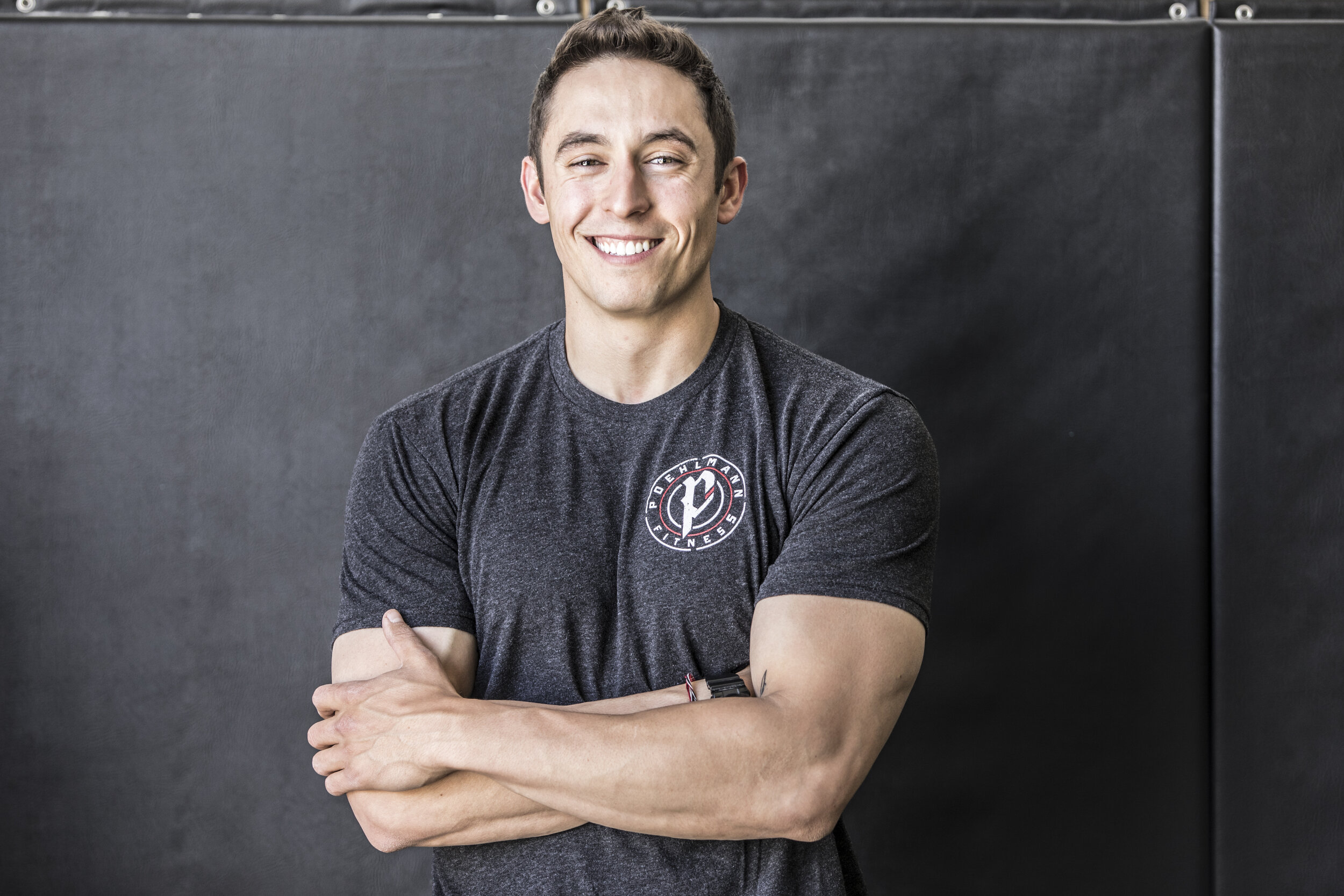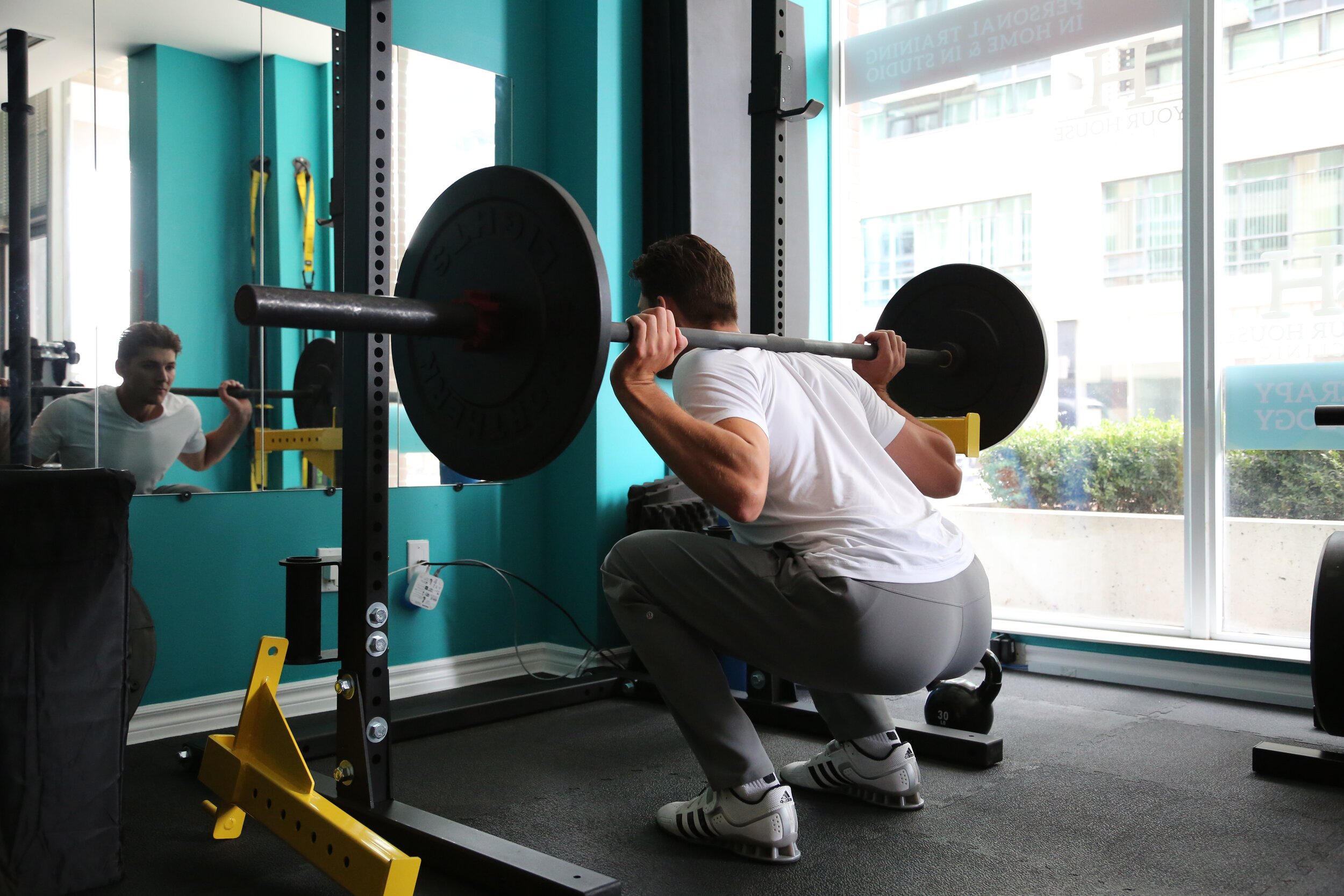
What to do When You've Lost Motivation
So, you’ve lost all motivation to workout and eat well. Maybe that’s normal. And maybe you’ll be ok.
The pandemic has us all flustered.
Many of us have lost the will to take care of our body.
We don’t want to workout anymore. We just want to kick back and eat what’s most convenient and tasty.
We are treating the pandemic like some sort of vacation.
AND THAT’S OK.
In today’s article I want to talk about what you can do if you’re in this boat.
So, you’ve lost all motivation to take care of yourself. What do you do?
ACCEPT IT
Listen, this is a really friggin’ weird time for all of us. To some, the world is the same. To others, their world was completely flipped upside down. It’s no wonder a lot of people have stopped caring to do things for their health.
And it is what it is.
I know, you likely expected the “no excuses” response, but really, how realistic is that?
When we are facing times that have our rhythms out of wack, we simply need to accept it and move on. So, if you don’t want to workout, eat healthy, or do whatever else you used to do, accept it. It is a reality. There is no sense in fighting that reality so stubbornly.
But what to do about it?
MOVE FORWARD
A lot of people think that moving forward means getting back to where you used to be. It doesn’t. It literally means “move forward”. Just like it says.
And that’s what you need to do.
One of the things I love teaching to my clients is that significant long-lasting transformation comes from tiny steps taken on a consistent basis. If fitness is anyone’s race, it’s the tortoise’s race.
Tiny changes compound to make big results over time.
So start by making tiny changes. If you currently walk 30 minutes per day, walk 45 minutes per day. If you run 20 minutes, run 25 minutes. If you eat 80g of protein, eat 90g of protein. Be a little bit better week by week.
In fact, that is your assignment and takeaway from this. Find ONE thing you want to improve, and focus on that one thing only. Let’s say it’s increasing the amount of greens you eat per day. Right now you get a serving of dark leafy greens two times per week. Set a goal of getting three servings of dark leafy greens per week. Once that is a habit, make it four, and so on. Once you’re at a point of getting one big serving of dark leafy greens each day without thinking about it, then move on to the next item you want to improve.
It’s not sexy, but it works.
And taking the time to turn those changes into real HABITS will pay off for years and years to come.
DO SOMETHING DIFFERENT
This helps me most when I am in times of low motivation.
As much as I enjoy strength training, there are times in my life when I really don’t feel like it. I am going through one of those times right now.
All I have at home is a set of bands and two dumbbells. Since the gyms are closed, that is what I have to work with.
I know tons of different things I can do to get similar results as I would at the gym. But if I’m not in the gym setting throwing heavy weight around, I just don’t really want to do it.
But I DO want to do other things. So I am capitalizing on that.
Right now I want to do some sprinting. I want to do some explosive work.
Will I lose some strength that I had when I was in the gym regularly? Probably. But that’s ok. That strength will come back. My priority right now is to keep myself from getting lazy.
If you’re finding yourself in a similar situation, I encourage you to do the same. Do what you WANT to do. If you’d rather do a weight circuit with your dumbbells than go on your scheduled run, do it. If you’d rather work on your mobility instead of doing sprints, do it.
Will you sacrifice some specific results that you may have wanted before this pandemic happened?
Maybe.
But the way I see it, it’s far better to keep yourself healthy than to get stuck into the life of a couch potato. When the gyms come back, the more active version of yourself will be ready to go back into that gym. The couch potato version of yourself won’t.
KEY TAKEAWAYS
Accept that things have changed. It’ll keep you from getting frustrated and going nowhere.
“Start where you are, use what you have, do what you can.” Move forward, no matter how small the step is.
Change things up. If you want to do one type of training over the other, then do it. Keeping yourself healthy is the priority.
ABOUT THE AUTHOR
Adam is a fitness professional, baseball fan, and cookie fanatic based in Fort Collins, Colorado. After hanging up the cleats, he found a strong interest in the human body and how it performs. Since then, Adam has been transforming lives through fitness in a fun and encouraging atmosphere. As an ACE CPT and Fitness Nutrition Specialist, he is constantly moved to help people improve in all walks of life.
WANT MORE FREE CONTENT?
Download any of our guides for FREE in the “free” tab at the top of the page.
This Mindset Shift Can Change Your Health and Fitness Forever
This one mindset shift can help you completely transform your body, mind, and spirit. But it’s no pill, you’ll need to apply the lessons to your daily life.
I don’t know if it’s an American thing, or a human thing, but we enjoy the ends of the spectrum. For some reason we enjoy choosing left or right, up or down. For some reason, we feel a need to go all in, or give up.
This is especially true in health, fitness, and nutrition. We go all the way in and give it our all, and as soon as we feel we haven’t done everything perfectly, we say f*** it and give it all up.
And this is the exact reason why most people fail when it comes to reaching their health and fitness goals. This is also the reason why people yo-yo. They lose 50 pounds and gain it all back, because they’re either dieting like a mad-man, or eating the whole tray of Girl Scout cookies.
It needs to stop. We need to stop living on one end of the spectrum. But how?
APPRECIATE THE LONG GAME
The first part of improving the way you think about your health and fitness is to first understand that your health and fitness is so much more than the goal you want to achieve in the next three months. Your health and fitness is about your quality of life now, tomorrow, next month, next year, and 20 years from now. Constantly striving for perfection is going to hurt you because perfection can’t be reached, you will always fall short. And perfection certainly doesn’t exist 20 years in a row.
Similar to almost anything in life, change starts by making small changes. Small changes compound to make big results. No one sits there and says “investing is pointless. Why would I invest $100 now? It’s better to invest 1 million dollars now.” That’s absurd. Anyone that understands and appreciates investing understands that it’s a long game and the sooner you start, the better, no matter how small the start is.
The same applies with your health, fitness, and nutrition. You need to have your eyes set on the long term, knowing that the decisions you make today, no matter how big or small, will contribute to a much better you down the road.
CHANGE YOUR MINDSET
Having said that, it’s absolutely crucial to change your mindset. You must stop living at one end of the spectrum, thinking you need to be perfect in every workout and every meal. You need to make a mindset shift. You need to make the shift towards simply being a little bit better.
That’s it.
Seriously.
All you need to do to completely transform the way you look, feel, and perform is focus on being a little bit better.
Let’s go back to the finances. I love the story of Ben and Arthur. Ben starts investing $2,000 per year at age 19, and stops at age 26. His brother, Arthur, starts investing at 27 years old, and stops at age 65. In total, Ben saved $16,000 and Arthur saved $76,000. At age 65, with a 12% return, Ben ends up with $2,288,996 and Arthur ends up with $1,532,166. That is a massive difference.
There are tons of variables that go into investments and returns like this. But the point is that Ben simply started making a dent, even if it was small, earlier than Arthur.
The same thing happens with health and fitness. The same exact thing. Those that choose to make a change now, even if it’s the smallest change, are completely different people down the road. Those that decided to go all in for a few months, and all out for another few months, are the same exact person as when they started.
Change your mindset. Don’t focus on being perfect. You won’t get there. Focus on being better. Focus on the ERs.
The ERs are the two magic letters at the end of words that make you a better person down the road. Don’t worry about being healthy today. Focus on being healthiER today than you were yesterday. Don’t worry about being the strongest today. Focus on being strongER today than you were yesterday. Don’t worry about being a super fit person today. Focus on being fittER today than you were yesterday.
You get the point. Make the mindset shift.
Let’s go through some ways you can apply this to your life right now.
MAKING THE SHIFT: REAL LIFE APPLICATIONS
There are a few different areas I like to have my clients focus on when they are moving toward any sort of goal.
The first is their performance in the gym. Most of look at our workouts as a means to an end, but that’s not the way to go about it. We need to be intentional and fully immersed in our workouts to see the results we want to see. We need to enjoy them for what they are.
In order to do this, I have my clients focus on setting at least two personal bests every time they workout. The app their program is uploaded on helps them keep track of personal bests and progress. Their job is to focus on adding more weight to the bar. My job is to change sets, reps, rest, etc., and their job is to focus on getting stronger.
You can and should do the same. Rather than focusing on a workout as a way to help you burn calories, focus on getting stronger in the workout. Remember, your workouts are not a means to an end. Challenge yourself to lift more than you did during last week’s workout. Do that week after week and you can completely change the way you look and feel.
The next thing I have my clients focus on is their activity during the day. I want them to be able to reach their goals and learn how to maintain them while maintaining a balanced lifestyle. Although burning tons of extra calories can help in some cases, I don’t want them adding more and more formal workouts to their days and weeks. That comes to be unsustainable very quick.
Rather than more and more workouts, I have them focus on increasing their steps. Adding steps in the day is a great way to make our lives more active and less sedentary.
Find out what your average step count was last week, and make a goal of increasing your average by 1k this week. Once that becomes a habit, increase it by another 1k. Before you know it, you’ll be living a more active life and that change will be far more sustainable than an extra hour of cardio each day.
Lastly, I have my clients apply this mindset shift to their nutrition. So many people want to be on a diet or meal plan, and quickly come to the realization that they can’t enjoy life at the same time. So, instead of doing that B.S., just focus on improving one thing about your nutrition. If you hardly ever eat any greens, try to get one serving of greens in per day. If you struggle eating enough protein, add an extra palm-sized serving of protein to your day. Maybe you just forget to eat and you don’t eat enough. Set an alarm on your phone reminding you to eat the snack you brought to work with you. Focus on one small thing, and make it better and better as each week goes by.
Don’t make things perfect. Make things better than they were, no matter how small.
KEY TAKEAWAYS
Appreciate the long game. This is a long race, and it’s not going to end three months from now. Make changes that last.
Make the mindset shift to stop living on one end of the spectrum. Just be a little bit better than you were last week.
ABOUT THE AUTHOR
Adam is a fitness professional, baseball fan, and cookie fanatic based in Fort Collins, Colorado. After hanging up the cleats, he found a strong interest in the human body and how it performs. Since then, Adam has been transforming lives through fitness in a fun and encouraging atmosphere. As an ACE CPT and Fitness Nutrition Specialist, he is constantly moved to help people improve in all walks of life.
WANT MORE FREE CONTENT?
Download any of our guides for FREE in the “free” tab at the top of the page.
3 Steps to a Better Workout Program
Most workout programs aren’t any good. Here’s what you need to do to make sure your workout program brings you results.
Most of us would agree that nutrition plays a really big role in the results that we see. Some may even say that nutrition is what makes or breaks you. This major emphasis on nutrition is good, and although I believe better nutritional habits should continue to be encouraged, the nutrition obsession has caused a lot of us to overlook the importance of a good training program.
This is especially true during the COVID-19 pandemic. Hundreds of thousands of trainers are scrambling to put together at home workout programs, and 95% of them aren’t any good. Exercises are thrown together at random with the goal to make the client (you) move and sweat as much as possible.
“Well, isn’t getting super sweaty and sore a sign of a good workout?” Nope, not at all.
A good training program and even a good workout contain many intricacies that play a major role in the benefits you may or may not see once you’re done.
So, what does make a good workout program? Let’s find out.
GOOD WORKOUT PROGRAMS ARE PHASED
This is by far one of the biggest mistakes I see when someone shows me the the workout program they’ve been doing from XYZ company. Workouts aren’t phased the way they should be.
What is phasing, exactly? Think of phasing as progression. Your workout program needs to set you up to be able to progress week after week, month after month, phase after phase. In short, your workout program should contain phases that will call your body to progress each time it begins working in a new phase.
Generally speaking, our bodies adapt to exercise in 3-6 weeks. Because of that, phases are generally 4 weeks long. That is the length I use to phase my client’s programs because it gives them a good amount of time to reap all the benefits of the phase, and it simply works well on the calendar to have each phase last one month.
As you go from phase to phase, things need to change in order for your body to change. You need to tell your body to change by changing the way you exercise. I can’t tell you how many times guys my age are stuck and aren’t seeing any results because they’ve been doing 8-12 reps for the last year thinking that it’s the only rep range that can build muscle.
Three of the best ways to change and phase your program is to adjust the amount of sets, reps, and rest as you go from phase to phase. Here is an example.
Phase 1: 3-4 sets, 4-6 reps, 2 minutes rest between sets
Phase 2: 3-4 sets, 8-10 reps, 90 seconds rest between sets
Phase 3: 3-4 sets, 12-15 reps, 60 seconds rest between sets
At week 3 or 4 of each phase, your body will begin to reap all the benefits of the routine you’ve been doing, and will be primed for more change as you transition into higher or lower reps, and more or less rest between sets.
Structuring your workout program as such will allow you to change and progress towards your goal as long as you stay consistent.
Before moving on, we need to address undulating periodization. UP is when there are multiple different rep ranges in a workout, and they change day by day. It would look a little something like this:
Workout A
Exercise 1: 4-6 reps
Exercise 2: 12-15 reps
Exercise 3: 8-10 Reps
Workout B
Exercise 1: 12-15 reps
Exercise 2: 8-10 reps
Exercise 3: 4-6 reps
Workout C
Exercise 1: 8-10 reps
Exercise 2: 4-6 reps
Exercise 3: 12-15 reps
There really isn’t any rhyme or reason. Tons and tons of people have seen great benefit from structuring their workout program like this, but not more so than progressively phasing after each month. I normally don’t recommend UP because it is hard to pin point why your body is or is not responding well. If you do this for a month straight and don’t see any progress, there’s no way of knowing how you should change your reps because you were training at a different range each day.
Far better to simply do one rep range, assess your progress, and adjust for the next phase.
GOOD WORKOUT PROGRAMS ARE BUILT ON FOUNDATIONAL EXERCISES
When creating your workout program, don’t get caught up in the flashiest, most complicated moves. Stick to the moves that stand the test of time.
Good foundational exercises are squats, deadlifts, lunges, presses (bench press), overhead press, pull-ups, and rows. Does that mean curls and calf raises are useless? Absolutely not. But building a strong foundation on these movements will enhance the results your body sees from other exercises.
These exercises will also send a louder strength and muscle building signal to your body because they are compound movements. They use more than one joint and more than one muscle. But what if your goal is to lose body fat? You should still use these exercises with the intent to build strength and muscle. Not only do compound exercises burn more calories, but the improvements you see in strength and muscle will help you burn more calories each day, too. And that will make fat loss way easier.
Generally speaking, you want these exercises to be at the beginning of your workouts, because they require the most energy and mental focus to be done with lots of weight and quality form. I never recommend putting any of these exercises at the end of your workouts when you’re completely gassed.
GOOD WORKOUT PROGRAMS ALLOW FOR REST
The thing I hate the most about fad workouts aside from the lack of progression and phasing is the lack of rest. Everyone wants to feel like they’re dying and getting a great workout from sweating their balls off, so they never rest. And that is what hurts them in the long run.
Let me make this clear. YOUR WORKOUT PROGRAM MUST HAVE REST PERIODS.
If your only goal is to get sweaty, then do your workouts in the blazing sun and just jump around for an hour straight. Actually, don’t do that. But if your goal is to get leaner, lose body fat, and get stronger, you need to allow your body to rest in between sets.
Resting in between sets will allow your central nervous system and muscle fibers to recover so they can lift the same weight, if not, more weight in the upcoming set. Remember, your goal is to progress workout after workout, week after week, and phase after phase. Do you expect your strength to stand a fighting chance if you do 10 heavy squats, rest for 10 seconds, and then try another set of 10 heavy squats? Absolutely not. You need to rest in between sets so your body can progress.
Methodically structuring your rest periods is just as important as the reps you do and the exercises you select for your workout program.
If you want pure strength benefits, you’ll want to rest a little longer, 90 seconds to 3 minutes in between sets as the central nervous system is largely responsible for strength and takes much longer to recover than muscle fibers do. If you want pure muscle building benefits, you want just enough rest between sets to allow your muscles to recover, but not so much rest that the muscle building signal goes down. 45-90 seconds is a good amount of time to rest in between sets when wanting to build muscle. Can you build muscle when resting for 2 minutes and focusing on strength? Yes. Can you build strength when purely focusing on building muscle? Absolutely. The two can certainly go hand in hand. But generally speaking, rest longer if your focus is strength, and a little shorter if your focus is on muscle building. If you want to improve your stamina and endurance, you can rest even shorter, around 30 seconds in between sets.
The main reason most people don’t rest long enough in between sets is because they don’t feel like they need to. All this means is that they need to lift heaver. Your muscles and central nervous system should feel like they absolutely need that rest before they go into the next set.
Your rest is important.
KEY TAKEAWAYS
Good workout programs have phases. Structure your workout to allow you to progress phase after phase (month after month)
Good workout programs have great exercise selection. Use the exercises that are going to give you the most benefit, and add accessory moves from there. Squats, deadlifts, lunges, presses, rows, and pull-ups are your best friends.
Good workout programs have rest periods. Your rest is just as important as anything else. Your muscles and central nervous system need to be challenged with heavy weight. In order to meet that challenge, they need to rest before going into the next set.
ABOUT THE AUTHOR
Adam is a fitness professional, baseball fan, and cookie fanatic based in Fort Collins, Colorado. After hanging up the cleats, he found a strong interest in the human body and how it performs. Since then, Adam has been transforming lives through fitness in a fun and encouraging atmosphere. As an ACE CPT and Fitness Nutrition Specialist, he is constantly moved to help people improve in all walks of life.
WANT MORE FREE CONTENT?
Download any of our guides for FREE in the “free” tab at the top of the page.












